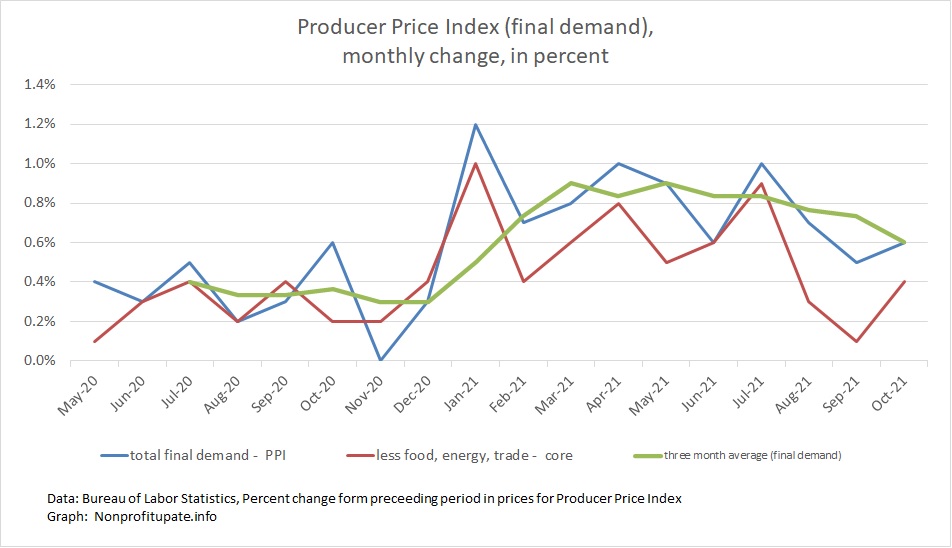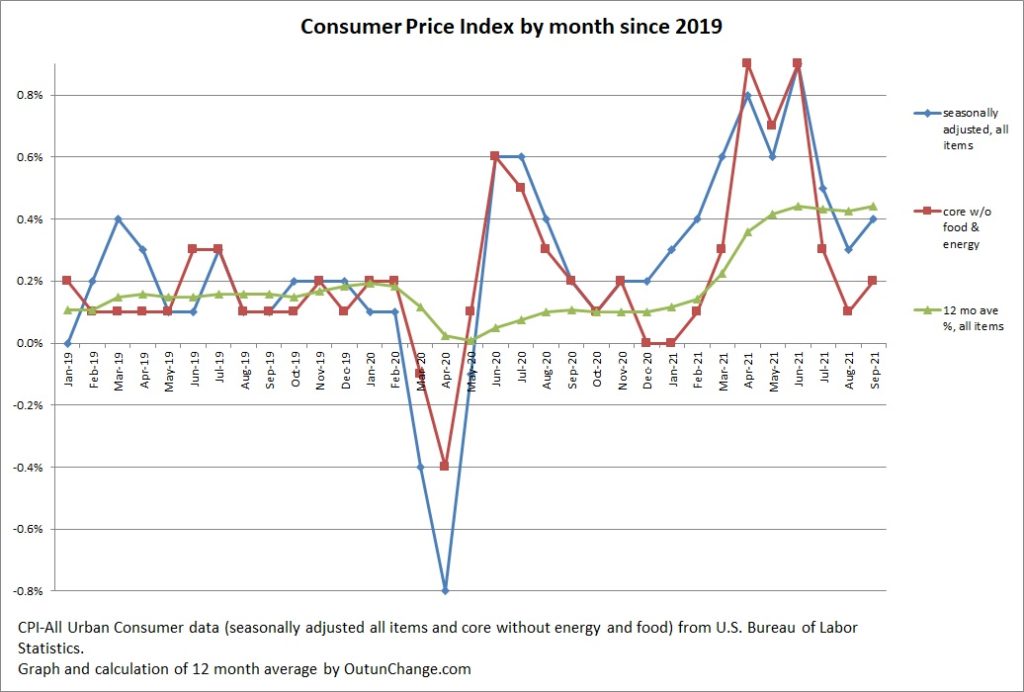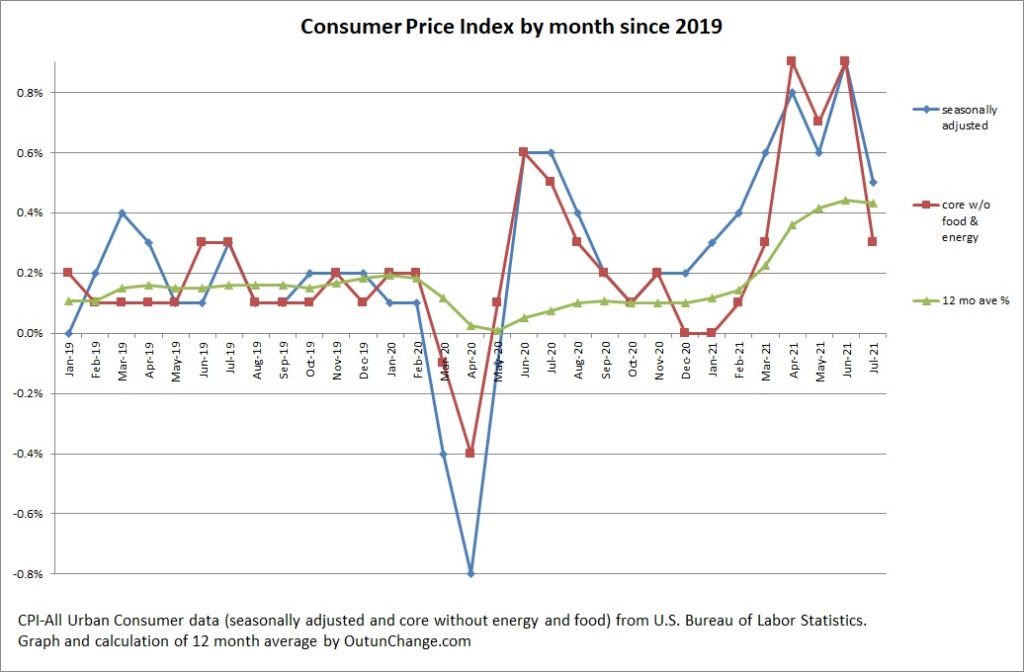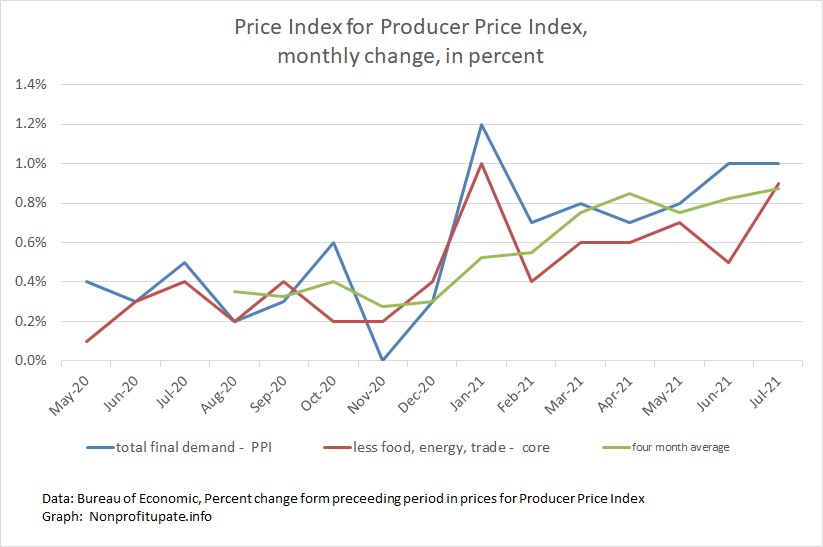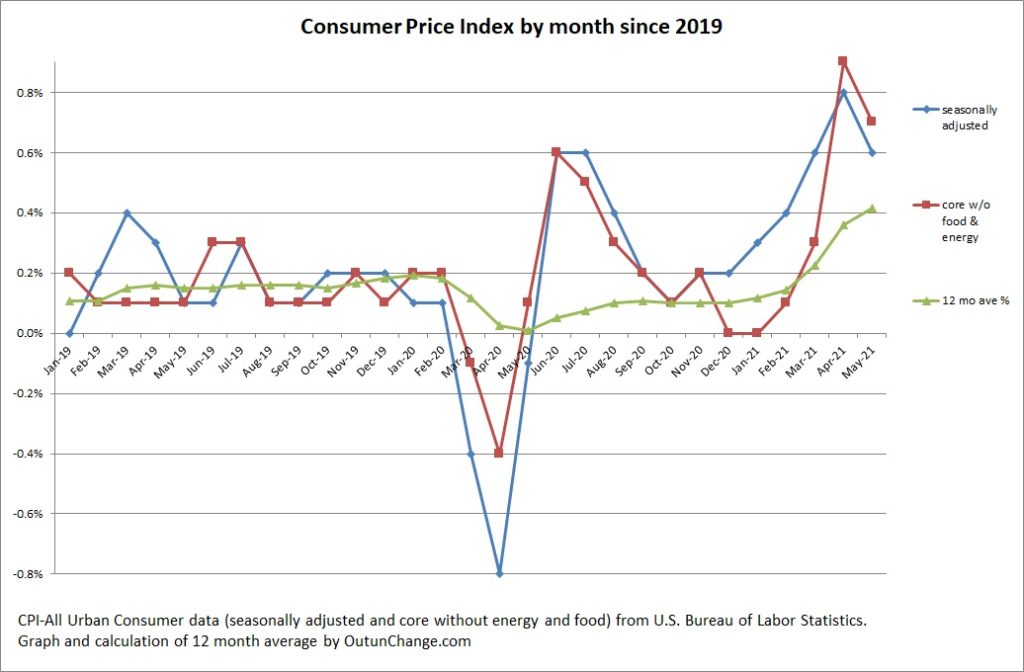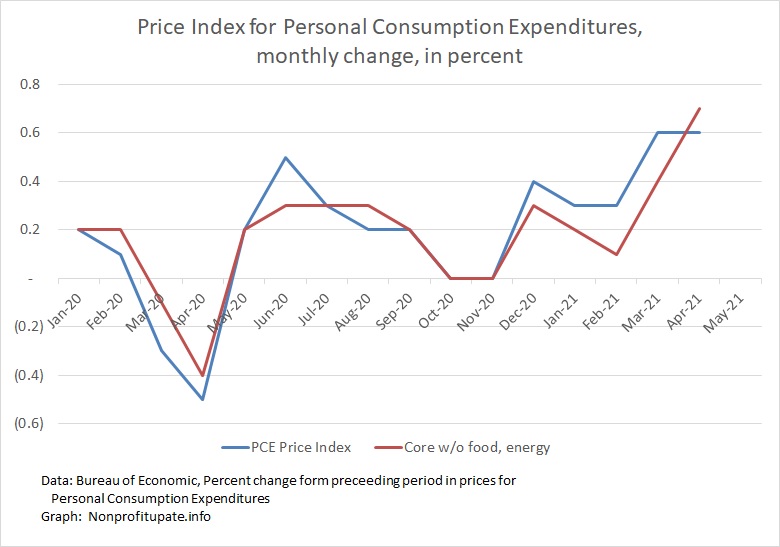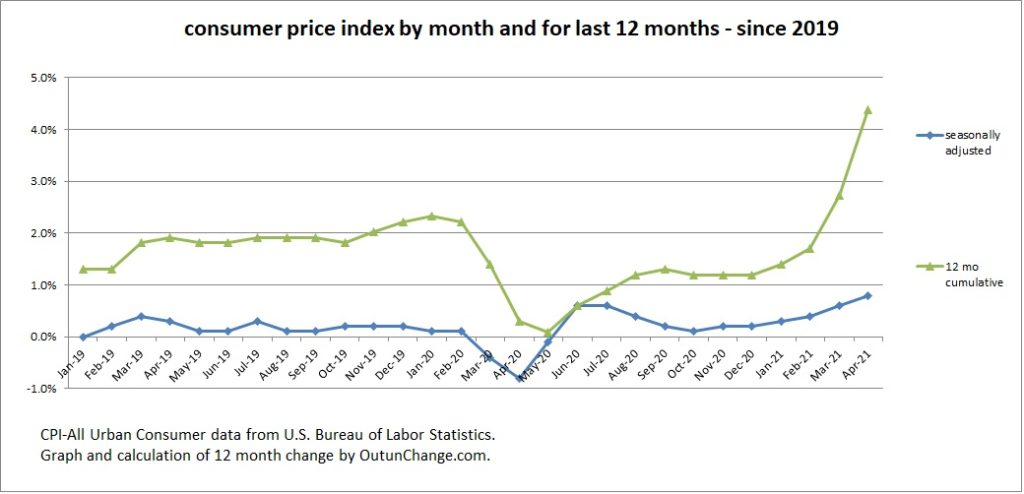Consumer Price Index increases 0.9% in October for the second time in 2021.
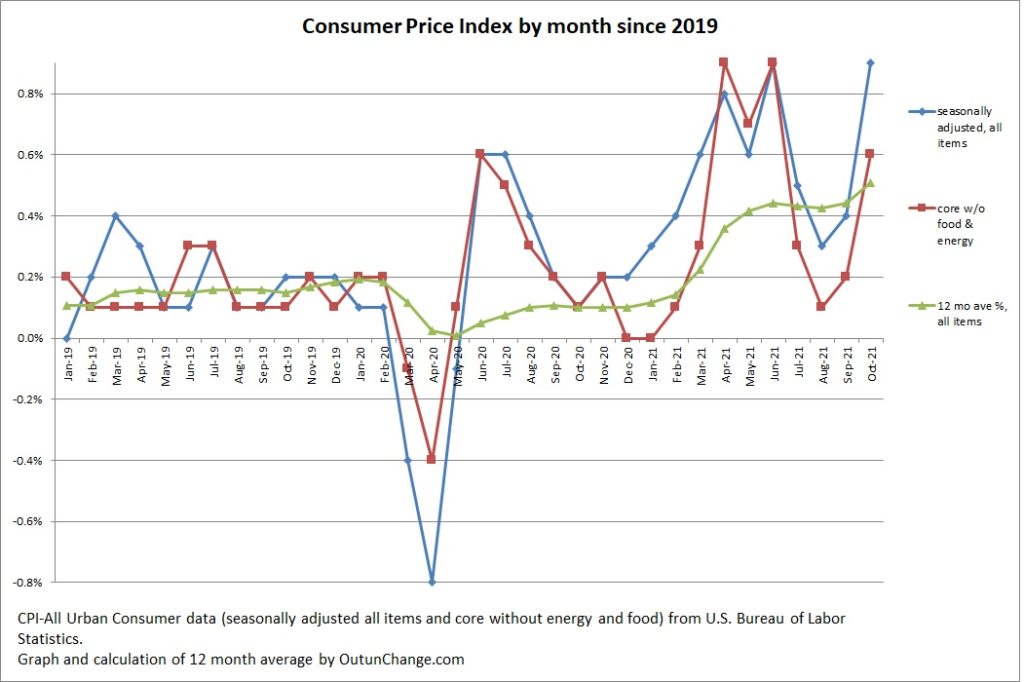
The Consumer Price Index (CPI) increased 0.9% in October 2021 after a more modest 0.4% increase in September and 0.2% in August.
The October increase matches the June increase of 0.9% and is slightly higher than April increase of 0.8%.
Diving into the components of the CPI shows the increases are broader than several months ago.
The press release from the Bureau of Labor Statistics explains:
“The monthly all items seasonally adjusted increase was broad-based, with increases in the indexes for energy, shelter, food, used cars and trucks, and new vehicles among the larger contributors. The energy index rose 4.8 percent over the month, as the gasoline index increased 6.1 percent and the other major energy component indexes also rose. The food index increased 0.9 percent as the index for food at home rose 1.0 percent. “
Warning sign as we roll into winter is fuel oil increased 12.3% in October and utility gas increased 6.6%. Keep in mind those are changes for the month, not for the year.
…Consumer Price Index increases 0.9% in October for the second time in 2021.Read More »
Consumer Price Index increases 0.9% in October for the second time in 2021. Read More »
